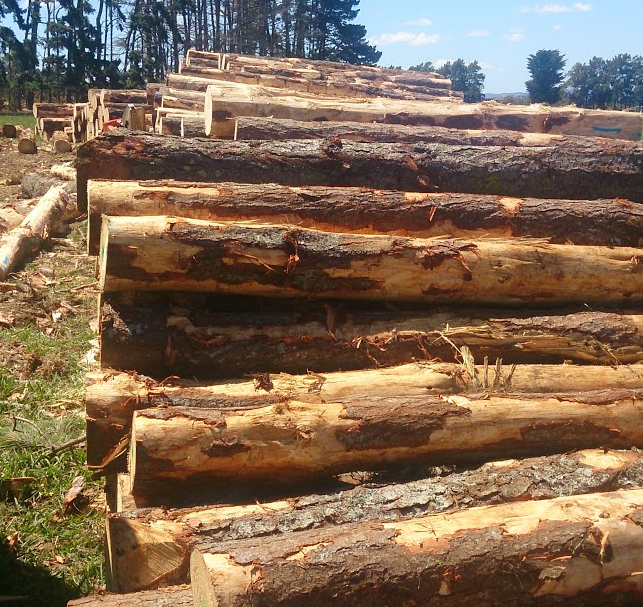
Woodlot related questions
The value of your stand depends on a number of factors, including:
• Tree species
• Type of tree crop – managed vs unmanaged
• Market conditions at time of harvesting
• Distance to markets
• Harvesting terrain
• Length of access roading
Our managers will come out to your property and provide you with a free no obligation proposal.
The value of your stand relies heavily on total stand volume and log product types within the stand. For smaller stands it is often not worth the cost of paying for a full stand inventory and our woodlot managers can give you a visual stand description.
For larger stands we recommend a full MARVL stand description is carried out and we can arrange for this to be done.
The optimum harvest age for a well grown and well tended radiata pine is somewhere between 26 -30 years of age.
This typically is when the stand has generated maximum growth verses the cost of capital invested. It is also the time of the rotation where trees have maximised their pruned clearwood growth and structural sawlogs have developed the high density fibre required for domestic framing sawlogs. However a number of other factors require consideration.
- If your stand is of poor quality then it may be better to harvest it early and replant with newer tree stocks and apply better management regimes to achieve a better second crop in the future.
- Market pricing may be peaking for export logs and your stands fit this specification better than the domestic market.
- Your trees may be overhanging fencelines creating a nuisance on the farm and leading to repair work and fence breakages that you don’t need. Additionally, these types of stands shade pasture leading to reduced grass growth
- The area in trees may be taking up valuable land that would now be better off in grass, with the grass providing a better return on your investment than the trees.
- Old untended shelter belts may be decreasing the visual look of your farm. Harvesting them now and replanting with slower growing amenity species may be a better option.
Confused? Call a PHS manager now for a free no obligation quote on the value of your stands and options on the best time for your harvest.

